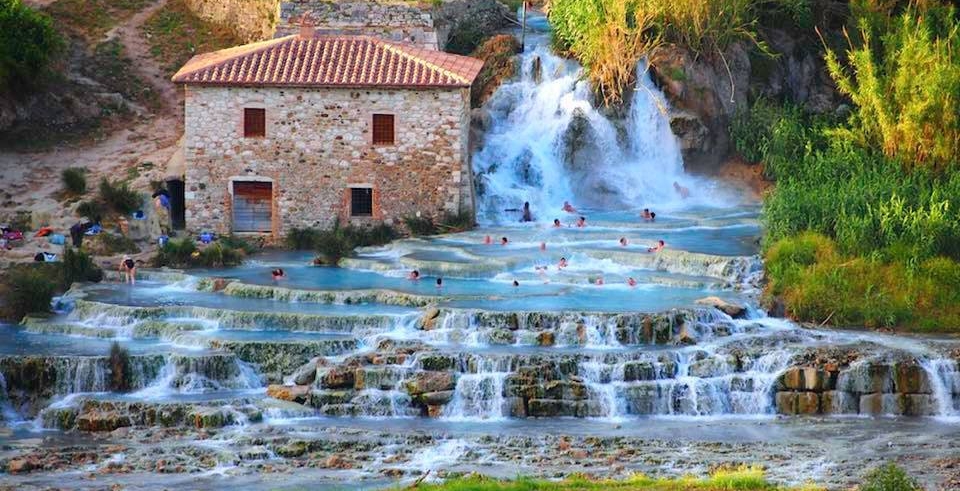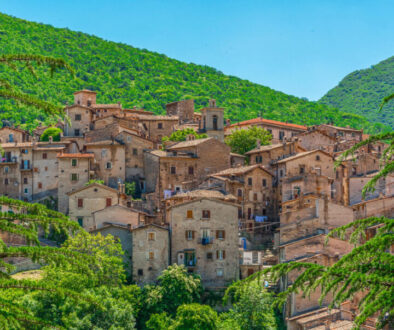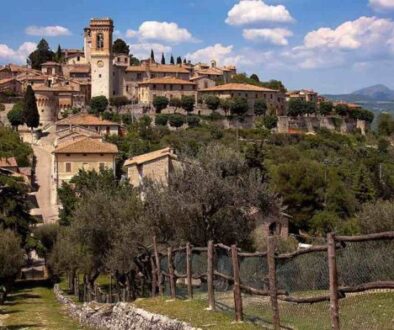The beautiful thermal waterfalls two hours from Rome. Natural Baths of Saturnia recommend it especially in winter: when the cold of the outside and the warmth of the water will give you unique emotions. To try.
In Maremma grossetana, and rises on a travertine plateau at an altitude of 294 meters. It is characterized by a warm and temperate climate, with an average annual rainfall rather low: July is the hottest month with an average temperature of about 23 ° C, January the coldest with an average temperature of about 6 ° C.
The earliest testimonies of the area around Saturnia date back to the Bronze Age (generally framed between 3500 and 1200 BC), even if the first more developed settlements are due to the Etruscans and seem to be datable to the 8th century BC. According to the Greek historian Dionigi di Alicarnasso, the city was founded by the Pelasgians and would have followed the fate of the nearby Vulci until 280 BC, when the whole area was conquered by Rome. Saturnia becomes first administrative headquarters and prefecture, then a Roman colony in 183 having Christ; it lives centuries of stability, then abruptly interrupted by the invasions of the Goths in 411 after Christ and the Lombards in 570 AD, which would have given rise to a long period of decadence. According to documents signed by Pope Clement III in 1188 Saturnia boasted its own castle, a plebeian church and, above all, a spa already frequented. At the time it was governed by the Aldobrandeschi family, although the infighting with Orvieto and Siena would have caused new destructive attacks: it is attested as a Sienese invasion against Margherita Aldobrandeschi has literally destroyed the village in 1299. The XIV century of Saturnia is still under the sign of ownership (first it is controlled by the Orvietans, then by the Baschi di Montemerano, then by the Orsini of Pitigliano), then, in 1410, the town was definitively conquered by Siena, which administered for almost two centuries (that is until 1593, when the Medici feuded it to the Marquis Ximenes). From here on, the story of Saturnia does not give big twists: the village has remained in a state of semi-abandonment during the seventeenth and eighteenth centuries, to begin to repopulate slowly only during the ‘900.
Today Saturnia is a renowned tourist resort, famous throughout Italy for its splendid spas spread across a vast territory that ranges from Mount Amiata to the hills of Albegna and Fiora, passing through the Maremma Grosseto and Talamone. According to local legends, the Baths of Saturnia would have been born at the point where Jupiter threw his lightning directed against Saturn following a violent quarrel; it is certain that the therapeutic properties of their sulphurous waters (which flow at a temperature of 37.5 °, with a flow rate of 800 liters per second) have been known since the time of the Etruscans.
The spa area has both freely accessible areas and luxurious establishments equipped with all comforts; the largest and most famous thermal waterfalls are those of the Mulino and Gorello


Saturnia’s main religious architecture (and, more generally, one of its symbolic buildings) is definitely the Church of Santa Maria Maddalena: as already mentioned, its existence is attested as early as 1188, but its current appearance is due to radical renovations dated as early as 1933. The church is best known for a number of prestigious objects it holds inside: two wooden crosses from the late 1700s, a church-shaped tabernacle with images of St. Clare and St. Elizabeth of Hungary, and, above all, a panel painting dating back to the late 1400s, attributed to Benvenuto di Giovanni, depicting the Madonna and Child between St. Sebastian and St. Mary Magdalene. Speaking instead of civil architecture, it is obligatory to mention first of all the already mentioned Rocca degli Aldobrandeschi: built towards the end of the 12th century and then restructured during the 15th century (due to the damage caused by the Sienese invasions), it too was then radically transformed in 1924, during the building of Castello Ciacci (built within the area delimited by its walls during Fascism, in neo-medieval style).
Today the Aldobrandesque fortress presents itself as an imposing fortified structure, with curtains with base and scarp, a series of slits of different heights and two corner towers with a circular base. Also absolutely relevant, both from a historical and artistic/architectural point of view, is the city wall that has surrounded the town since Roman times (based on defensive structures dating back to the Etruscans). The Walls of Saturnia were renovated and expanded by the Aldobrandeschi in the 13th century, then were rebuilt under the rule of the Republic of Siena in the 15th century. The only structure that has survived the passage of time intact is the southern Porta Romana: it guarantees access to the fortified village of the municipality of Manciano along the ancient route of the Via Clodia, it is made up of stone wall structures and is characterized by the openness double round arch on its internal side (which differs from the simple arch on the external side). Saturnia is about 60 kilometers from the provincial capital Grosseto; the main roads to reach it are the SP 159 coming from the south, or the SP 155 coming from the north. The road that connects it to the main towns in the area is the Provincial Road 10 Follonata, which unites it with Montemarano, Triana, Poggio Capanne, Catabbio, Semproniano and Petricci. The closest train station is Albinia, about 50 kilometers away, the closest airport is the aforementioned Grosseto.


